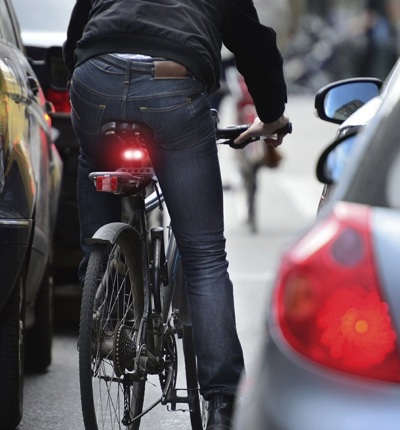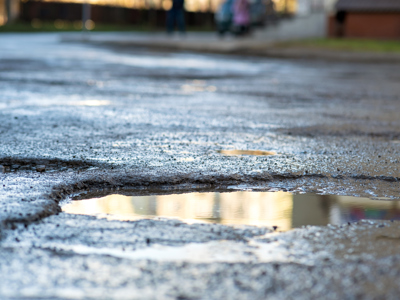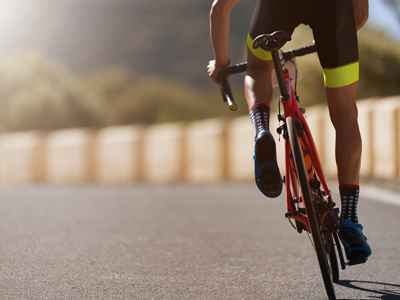
Handle It Right Part 1: what to do after a cycling accident
A cycling accident can cause shock and trauma, and you might not know what to do next. This blog details what to do immediately after an accident.
Posted on 05 April 2024
Cycling is an excellent mode of transport for many reasons; it is cheap, efficient, healthy, and good for the environment. Additionally, it is a lot of fun! But sadly, bike accidents can happen and, if you have been involved in a cycling accident, it may be necessary to make a legal claim.
The moments after a cycling accident can be traumatic and confusing, and, in the aftermath, the safety of you and other road users is paramount. This article will give you helpful insight and advice on what to do immediately after a bike collision. Firstly, it will cover how to stay safe and assess your injuries straight after the accident. Next, it will explain how to collect evidence so you can pursue a successful cycling claim against the person who caused the accident.
Step 1: Your safety
If you have been involved in a road traffic accident, the first thing to do is minimise any further risk to yourself and others. If you can move without causing more harm, then you should try to get out of any immediate danger. If you have landed on the road, you should move to the pavement or the side of the road.
Step 2: Assess your injuries
Once you are safe, check for any cuts, grazes or damage to your helmet, take stock of how you are feeling and any areas of pain. Give yourself a short amount of time to collect your thoughts and for the immediate adrenaline to wear off before deciding whether paramedics should be called.
As with any accident, prioritise seeking immediate medical attention to ensure your injuries are properly managed, putting you in the best position for a speedy recovery. Even if you believe you only have minor injuries, adrenaline and shock can mask your symptoms after a collision. There may be underlying issues like sprains, fractures, concussions, or internal bleeding that don’t present themselves immediately. A professional medical evaluation can identify any hidden injuries and provide proper treatment.
If you have a head injury, excessive bleeding, broken bones, significant pain, or have difficulty breathing call paramedics immediately. Traumatic injuries require emergency medical care to prevent further complications. Other people at the scene should call 999 if you are unable to.
In our experience, the police usually arrive first to secure the scene and ensure safety. The paramedics can take longer and there can sometimes be a significant wait. Accept any offers of warm clothes from onlookers as you can quickly become cold once you’re no longer moving and in shock. If you can, ask the police officer to provide you with the police / crime reference for your accident and the contact details for the investigating officer.
Once the ambulance arrives, follow any advice or precautionary recommendations, especially if it includes going to the hospital for further assessments.
Step 3: Gather evidence from the road traffic collision
Once you are out of immediate danger, if your injuries allow and it is safe, we recommend securing the following evidence:
Photos:
If your phone is not damaged, take a clear photo of the registration plate of the vehicle responsible for the accident. Ensure you do this as soon as possible in case the driver leaves. This will allow the vehicle’s insurance details to be traced.
Unlike car-on-car accidents, often the driver will not have sustained significant damage to their vehicle. This means they can leave if they want to and unfortunately this does happen.
Photos showing the vehicle’s make and model can be helpful, and if photos can be taken before the vehicle is moved, its position in the road can assist in establishing the circumstances of the collision.
Although it can be tricky depending on the motorist's attitude, if you are able to safely take a photo of them, it is helpful in identifying the correct defendant should any disputes arise.
Finally, take photos of any bike damage caused, so we have the evidence to recover any repair or replacement costs.
Exchange details:
If you can speak to the driver, ask for their registration plate, full name, address and motor insurance details. If you can't speak to them or they are unwilling to provide this information, the police should be called via 999 if you haven't already done so. The police can then secure this information. The driver is under the same obligation to exchange details with you as they are if they had collided with another motor vehicle.
If any witnesses come forward, make a note of their name and contact details; phone number and email address are preferable.
Video evidence:
If you are riding with a cycling camera, make sure to stop the recording and save the footage to avoid it being lost or overwritten. If possible, we also advise recording any interactions with the driver and any witnesses too. Next, take a video of your immediate account of the accident at the scene, as this will capture details that might then be forgotten.
You should also note the location of the collision including any nearby house numbers or commercial properties. This can be used for investigations into securing any footage of the collision through video doorbells or CCTV. Whilst the police will sometimes secure this footage, we'd advise you to attempt to secure this yourself as a priority. In some cases, videos are overwritten in as little time as a week, so may have disappeared by the time we come to be instructed or the police attempt to secure it.
Identify location:
What3words.com is a useful online tool for identifying the precise location if the collision happens somewhere that is not known to you, for example, if you are doing a club ride at the time. It can be especially helpful on roads where there are no obvious landmarks or properties to identify the location. It is an app that you can download to your phone. If you do not have this app then opening maps on your phone and taking a screenshot of your location is also a good way of recording the location accurately.
What happens if the driver leaves before providing their details?
Sometimes motorists will leave the scene before providing their details or giving you a chance to take a photo of the vehicle. This might be because they are oblivious of any impact, they do not believe they are at fault, or they might be attempting to evade being identified.
This does not mean that you cannot pursue a cycling accident claim; instead, it can be done via the Motor Insurers’ Bureau as an untraced driver’s claim. Reporting the accident to the police as soon as possible is vital, as a police report can be important in persuading the Motor Insurers’ Bureau to consider the claim.
We hope this guide provides helpful tips and guidance on what to do immediately after an accident to ensure you are safe, in the best position for a speedy recovery, and understand how to gather evidence to maximise your chances of a successful claim.
If a pothole or other road defect caused your accident, you can read our guide to gathering evidence here.
If you wish to seek legal advice or claim compensation, our personal injury lawyers specialising in cycling accidents are ready to assist you. We will provide you with the necessary support and guidance throughout the process. We are happy to discuss whether there are prospects of a claim and can offer No Win No Fee where appropriate.
Our contact details - get in touch today:
Call us: 020 7650 1200
Email us: postbox@leighday.co.uk
Our Partnership with British Cycling
We believe passionately that the safety of cyclist is paramount. Our commitment to the cycling community is genuine and long-standing. We are the exclusive legal partner for British Cycling with a relationship dating back over 18 years.
To ensure the safety of our towns and cities, cyclists must be central to the plans to improve road infrastructure. This will help prevent many common cycling injuries. We are proud to be part of British Cycling's campaigning to promote cycling and reduce road accidents.

Pothole claims: How to successfully gather evidence
Potholes and road defects can put a cyclist's safety at risk. They can cause injuries and bike damage. But did you know that you could seek compensation for losses arising from accidents caused by potholes?

Leigh Day Cycling Rehabilitation Series
At Leigh Day, we’re experienced cyclists who are also cycling lawyers. Our cycling rehabilitation series aims to provide support and guidance to those who have suffered a cycling injury and want to get back on their bikes. This series will explore cycling tips to guide you on the road to recovery.

